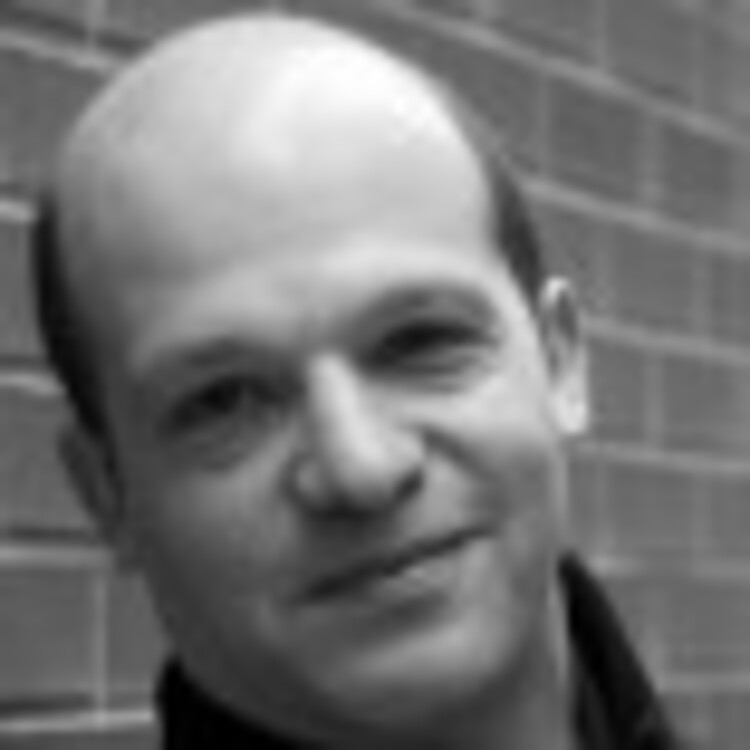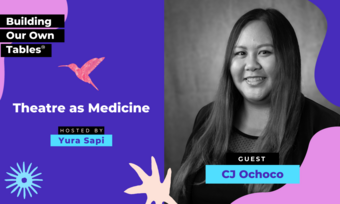Being the Change
An interview with Woolly Mammoth's Jeff Herrmann by Laley Lippard
Laley: Thank you for meeting with me, Jeff. I was inspired to talk with you after reading Miriam Weisfeld’s article on Connectivity. Exciting ideas, but I'm curious about the practical innovations you've made since the "Who’s in Your Circle?" conference. How has Woolly Mammoth’s administrative and artistic structure changed?
Jeff: I think I should talk a little about Connectivity in terms of our administrative structure as it really speaks to this idea of cross-departmental work. As Miriam mentioned, the ideas behind Connectivity emerged as we were preparing for our 30th anniversary season in 2009 – 2010. There was a lot of discussion for eighteen months about what we wanted to do—we knew we didn’t want to use it as an occasion to pat ourselves on the back for the past thirty years—and there were a number of dominant themes that came out of those discussions. The first was a recognition of what it meant to be moving into this new building down here in Penn Quarter and a real consciousness of the fact that we were now situated just down the street from the Capitol and steps from the National Mall, where all the great symbols of our democracy are housed. Given the symbolism of our new location, it got us thinking about what it would take to move theatre from being just an entertainment option to serving as an essential platform for civic engagement and dialogue.
Another thing we did was take a real close look at our mission statement, which is, “…to ignite an explosive engagement between theatre artists and the community by developing, producing, and promoting new plays that explore the edges of theatrical style and human experience, and by implementing new ways to use the artistry of theatre to serve the people of Greater Washington, DC.” I think for many years we were focused on the “developing, producing, and promoting new plays” part of our mission and, for the first time really, we started to dig into that first phrase, which commits us to igniting an “explosive engagement” with the community. During our “Who’s In Your Circle?” conference, we asked our colleagues from around the country, “What should the relationship between a theatre and its community be?” What emerged were the seeds of what we now call “Connectivity,” a new strategy for strengthening the relationship between our work and the world, and it’s ended up transforming everything about Woolly and how we operate.
If we want a fully realized production, it requires collaboration between all these different kinds of artists. The recent broadening of the Company better reflects what we’re trying to put on our stage. And what we’re saying to each member is that we believe in you and we want to build long-lasting relationships with you and between each of you—and that out of that rapport, great work can emerge. That great work is more than simply great acting work.
The essential core of the idea is that at the center of our work is the play, the work of art; but surrounding it is a whole sweep of activity designed to enhance, contextualize, and enlarge the experience. This might variously include lobby installations, pre- and post-show conversations in a variety of formats, expanded program content, blog and podcast content, special events, and more. We also take a very pro-active approach to designing who is sitting out there in those seats for each show based on the nature and needs of that show. This has demanded a lot of cross-departmental work. Indeed, Connectivity is a brand new department at Woolly, not just a function, and this has caused a readjustment in how everyone works and relates to one another. Where does one job begin and where does another end? Because of our relatively small size and flat hierarchy at Woolly, we like to think we’re easy and flexible and aren’t siloed like larger institutions. But we discovered we are, which was surprising and shocking. But the process of introducing Connectivity to the organization has helped us tear down some of those walls; and, in some ways, that’s been the most powerful thing about Connectivity: the way it’s drawn us all together. That includes the creative artists on each show: we engage the playwright, the director, the designers, and the performers in the Connectivity process and have been delighted to see how much they enjoy getting involved in this way.
Laley: Your reimagining of how a community is “connected” to Woolly is also reflected in the faces of your artistic Company, as well. Recently, you invited several new artists into the Company, which had been solely an acting company. Now you have playwrights, directors, and designers. Was there more behind bringing different kinds of artists into your Company than diversity of voices?
Jeff: I think, ultimately, what it comes down to is that we’re trying to develop full productions. Oftentimes, new play work is focused primarily on the text, on the words. But a work of theatre is so much more than just the script—yes, it’s the playwright, but it’s also the actors, designers, and director. I think the enlargement of our Company reflects this understanding. If we want a fully realized production, it requires collaboration between all these different kinds of artists. The recent broadening of the Company better reflects what we’re trying to put on our stage. And what we’re saying to each member is that we believe in you and we want to build long-lasting relationships with you and between each of you—and that out of that rapport, great work can emerge. That great work is more than simply great acting work.
Certainly, we are asking more of our Company members now, too, beyond simply the ability to list them in our program. We are asking them to represent Woolly to the world and we are integrating them in the running of the theatre: joining us at benefits, engaging with donors and the board. The goal is to see them become an intrinsic part of the life of the theatre, not just involved in a single production. I think it has been a pleasant surprise that they enjoy being involved with Woolly in this way. But it’s got to be a two-way street—we have to be open to their interests and desires, too, and we are actively pursuing that conversation.
We are certainly choosing artists for the Company that we have a track record with; no one is brand new to the Woolly stage. In addition, we looked for artists who can contribute to the larger dialogue about Woolly’s work and how it’s going to be produced. We want Company members who we feel can contribute to that shared sense of purpose and unity we try to build around each of our shows.
Laley: You’re merging the conventional regional theatre and ensemble/collective company ethos. It seems like this was inspired by a reorganization of who the generative artists are in a play’s development, and that you’re working towards a devising model that does not always seat the playwright at the center of the play-making process.
Jeff: There is a certain kind of play we are looking for at Woolly and I think something that finally dawned on us was that no matter how far we fly [Director of Artistic Development] Miriam [Weisfeld] and [Literary Manager] John [Baker] to scout for new plays or how many new play festivals or readings they attend, there was a desire to hear the Company more in our artistic voice. We are still going to be canvassing the landscape to find plays that meet our mission; but we’re also taking more responsibility for generating material. That means more playwright commissions, more partnerships with colleague organizations, and, possibly, multidisciplinary devised work. I think the recent evolution of the Company is reflective of that ambition.
The phrase “unity of purpose” has become such an important concept for us. How do we draw the staff, the board, our Company, and others around the project that is Woolly? Broadening Company membership has been one strategy. Another has been to extend the timeframe of production development so that the artists aren’t meeting for the first time on the first day of rehearsal. Their collaboration needs to start and deepen long before rehearsal begins. And it’s not just a conversation between the director and the playwright anymore.











Comments
The article is just the start of the conversation—we want to know what you think about this subject, too! HowlRound is a space for knowledge-sharing, and we welcome spirited, thoughtful, and on-topic dialogue. Find our full comments policy here